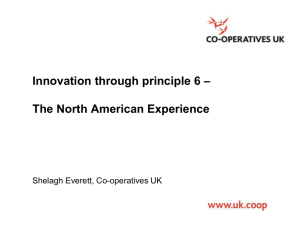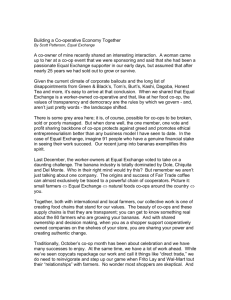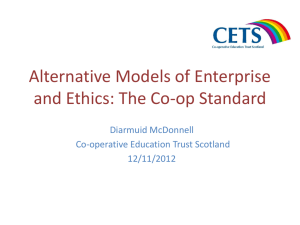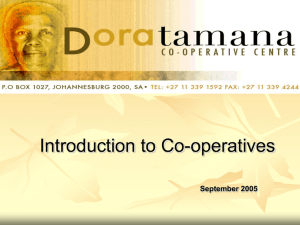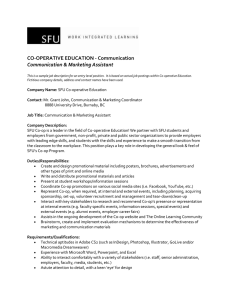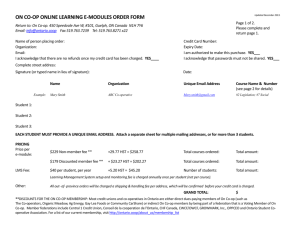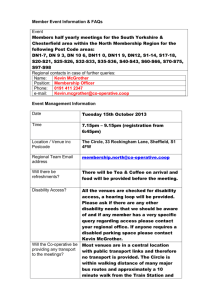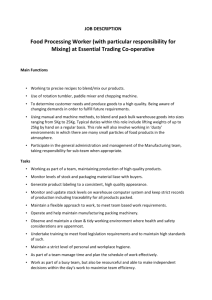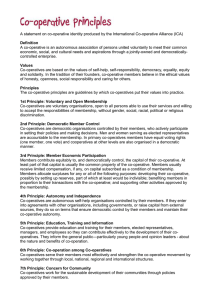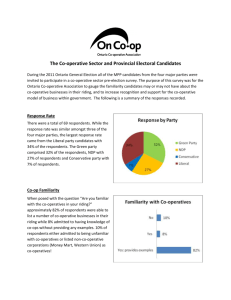ERE32E Co-operative Business Bridget Carroll
advertisement
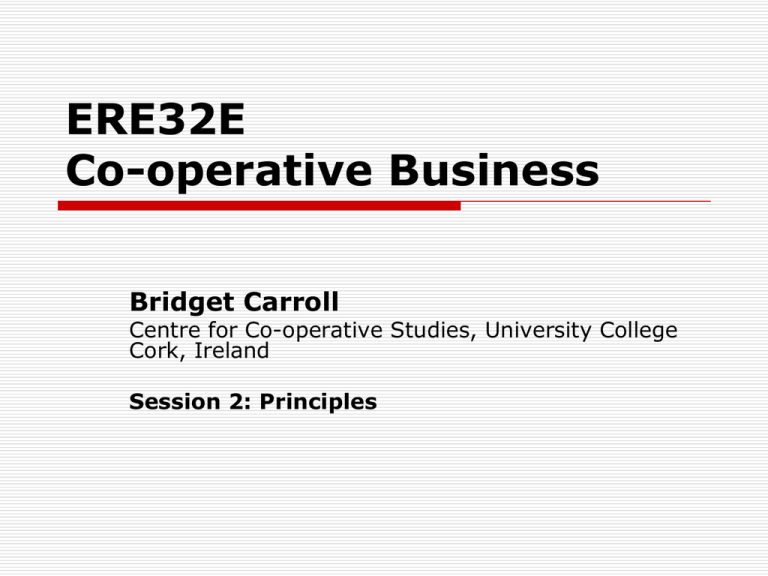
ERE32E Co-operative Business Bridget Carroll Centre for Co-operative Studies, University College Cork, Ireland Session 2: Principles Distinguishing co-ops Conventional companies use the difference between the cost and selling price as profit for investors Co-ops will either Refund some of the difference to members Retain as common property of coop/invest in the co-op Invest for other social purposes Possible problems with conventional (investor owned) companies Short-term decision-making Profit maximising Bonuses Concentrated ownership Not realising creative capacity of workers Decisions not in interests of consumers/worke rs/community Ownership from a distance Speculation Co operative Principles How might you operate a business that benefits members not investors? How do you put certain values into practice? Guidelines for how co-ops operate Principles not legislated for in every country Co-op Principles 1. 2. 3. 4. 5. 6. 7. Voluntary & Open Membership Democratic Member Control Member Economic Participation Autonomy & Independence Education, Training & Information Co-operation Among Co-operatives Concern for Community Open and voluntary membership Open to All who can use the services Should be willing to accept responsibilities of membership Regardless of age, gender, politics Nominal shareholding required May be other requirements – e.g. must supply (milk), must live in a certain area Democratic Member Control Co-op democratically controlled – active participation One-member:one vote, regardless of shareholding* Operationalised at AGM primarily Other opportunities for member participation? The bigger the co-operative, the lesser the democracy? Member Economic Participation Capital of co-operative contributed to and democratically controlled by the members Members usually receive limited compensation Distributed according to use Issued as bonus shares Reinvest (with agreement of members) Autonomy and Independence Autonomous, controlled by members Should remain independent of state supports but depends on market position Not always easy! Education, Training and Information Education for members Training and education for management, volunteers, staff Information to general public, government, EU etc. Visibility of co-ops Co-operative marketing – for education? For differentation? For sales? .coop - internet domain name Co-operation among co-operatives Based on recognition of benefits of supporting each other Work together within movements and between movements Work together locally, regionally, nationally, internationally Trade together Concern for community Sustainable development of local communities Sponsorship Ethical policies/investments Responsible lending, packaging etc Environmental protection Job creation initiatives www.co-operativebank.coop / www.vancity.com Application of co-op principles? Open membership - subject to “common bond” and legislation/regulation Democratic member control through Annual General Meeting (AGM) Minimum shareholding, distribution according to savings Each credit union is independent Education, training and information? Co-operation among co-operatives – through chapter and league, Concern for community – many examples E.g. social lending, money advice Homework! This afternoon: Read chapters 2 & 3 of The Competitive Advantages of Cooperatives.
